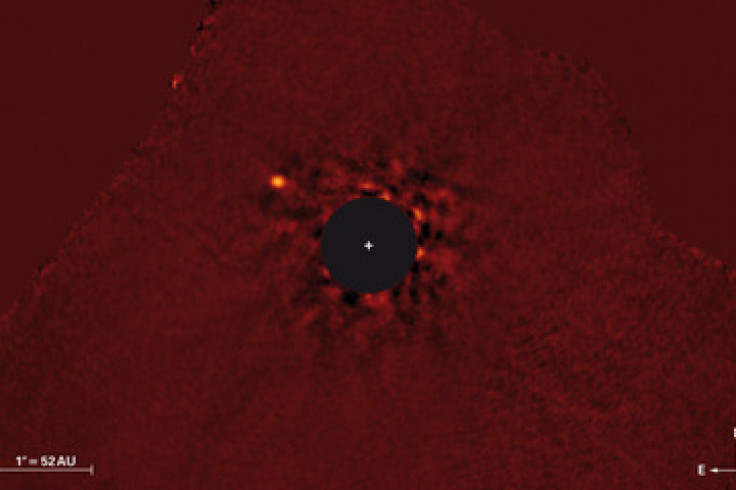'Super-Jupiter' Photo Shows Largest Planet In Solar System, 13 Times Bigger Than Jupiter

Astronomers have made a huge discovery (ignore the pun) in spotting a planet 13 times more massive than Jupiter. The “Super-Jupiter” is now being referred to as the largest planet in our solar system.
According to a report by SPACE.com, the planet orbits a star called Kappa Andromedae that is 2.5 times the mass of the sun and is located 170 light-years away from Earth.
Based on observations of the photo and the system, the super Jupiter appears to have formed in the same way ordinary, lower-mass exoplanets do -- by coalescing from a "protoplanetary disk" of material orbiting a nascent star.
The formation is explained by the report, which says that its orbit is at a comparable distance to planetary orbits in the solar system. Furthermore, its star, kappa Andromedae, is relatively young, at about 30 million years old (for comparison, the sun is roughly 5 billion years old). These clues point toward a formation story typical of smaller planets.
The theory of a bigger planet had been shot down prior to the recent discovery with some scientists saying that such large stars couldn’t give birth to planets in protoplanetary disks. Essentially, the new finding proves those scientists wrong.
The photo of the “Super-Jupiter” was reportedly taken by Japan’s Subaru 8-meter telescope on the summit of Mauna Kea in Hawaii.
SPACE.com reports that in an effort to capture the picture as best as they could, astronomers looked in infrared light, and used a technique to hide the glare from the star in order to reveal the relatively faint dot of light from the planet.
More than 800 planets have been discovered beyond the solar system, but only a handful so far have been imaged directly.
© Copyright IBTimes 2024. All rights reserved.












